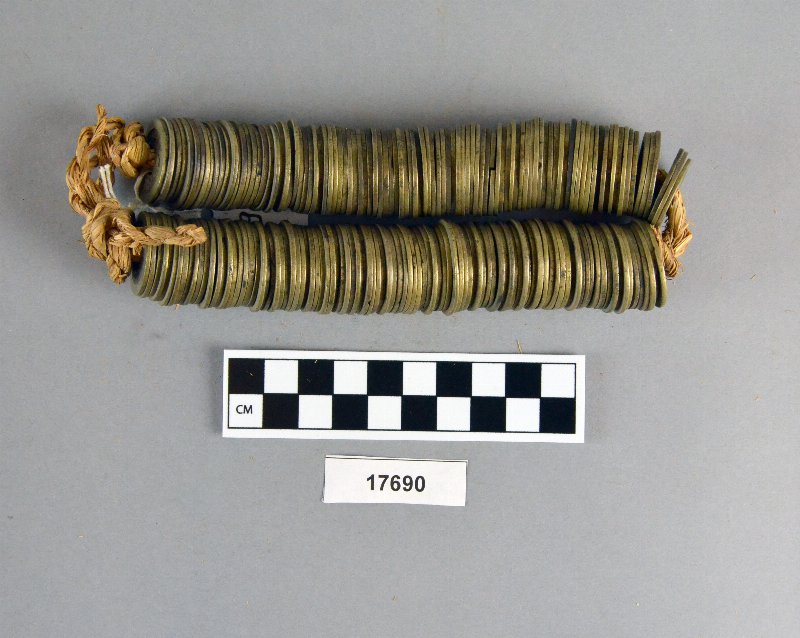| Object Number | 17690 |
| Current Location | Collections Storage |
| Culture | Korean |
| Provenience | Korea |
| Period | Joseon Dynasty |
| Date Made | 1392 - 1895 |
| Section | Asian |
| Materials | Metal |
| Description | String of two hundred coins strung together through the center square in order to make it easier for transport. A single coin’s value was so minimal that it would take many coins to pay a small bill. The string used is made of rice straw, twisted in a way to give it more strength. Bundles of two hundred pieces, similar to this piece, would be strung together and tied with nine others to make a bundle of ten. The bundles of coins would be carried on ones back with a jigae (지개), a device made from wood that resembled a chair with its front legs missing, that would attach on ones back by bands of rope going under the arm pits. These carrying devices could carry sixty bundles. The late Joseon Period experienced increased economic developement which demanded currency other than the traditional bartering of rice and other goods. Under King Injo the Sangpyeong tongbo (常平通寶) coin was established in Korea and circulated. The creation of taxation in the 18th century cemented cash as the main medium for economic exchange in Korea. |
| Credit Line | Gift of Dr. E. B. Landis, 1896 |
Report problems and issues to digitalmedia@pennmuseum.org.


